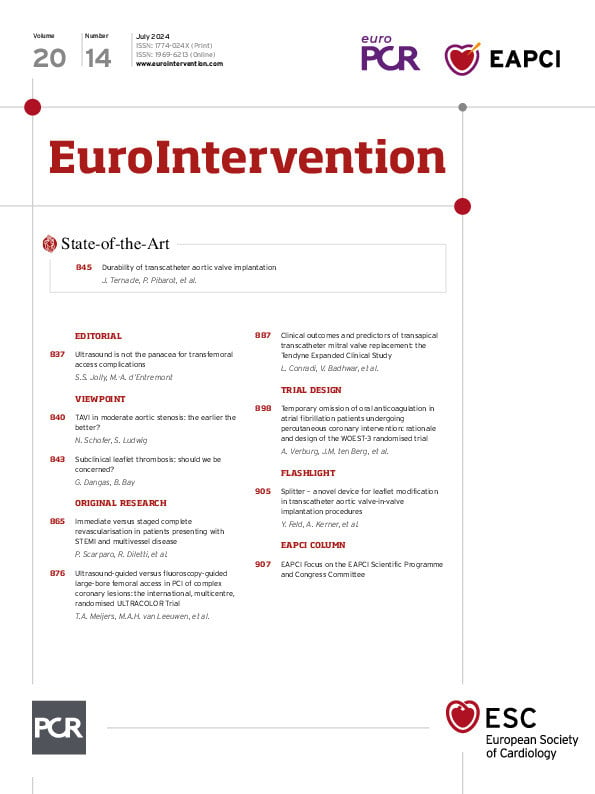Well beyond transcatheter aortic valve implantation (TAVI), the longevity of bioprosthetic valves is of great interest, and now that TAVI is sufficiently mature, we’ll address those issues here. And we’ll do that along with the wide selection of other topics that make this Journal as durable as the interventions you perform!
Durability of TAVI
In a state-of-the-art review, Julien Ternacle, Philippe Pibarot and colleagues offer us a primer on the definition, aetiology, risk factors, mechanisms, diagnosis, clinical impact, and management of bioprosthetic valve dysfunction and failure following TAVI, and a comparative with surgical aortic valve replacement.
Immediate vs staged revascularisation in STEMI patients
Paola Scarparo, Roberto Diletti and colleagues investigate the effect of immediate complete revascularisation compared to staged complete revascularisation on clinical outcomes in ST-segment elevation myocardial infarction (STEMI) patients without cardiogenic shock. Although the one-year outcomes were similar between the two, immediate revascularisation may be associated with a shorter hospital stay.
The ULTRACOLOR Trial
Can the outcomes of large-bore percutaneous coronary intervention be improved by using ultrasound-guided femoral puncture? Thomas A. Meijers, Maarten A.H. van Leeuwen and colleagues compare this to fluoroscopy-guided large-bore femoral puncture in the ULTRACOLOR Trial. Although neither clinically relevant bleeding nor access site complications were significantly reduced, they noted a considerably higher first-pass puncture success rate with ultrasound-guided access.
Expanded study results for transapical TMVR
In the Tendyne Expanded Clinical Study, Lenard Conradi, Vinay Badhwar and colleagues explore the outcomes and predictors of mortality for patients with symptomatic mitral regurgitation treated with transapical transcatheter mitral valve replacement (TMVR). At 2 years, mitral regurgitation was eliminated in the majority of successfully treated patients, with a sustained reduction of pulmonary artery pressure, resulting in an improvement of symptoms, functional capacity and quality of life.

